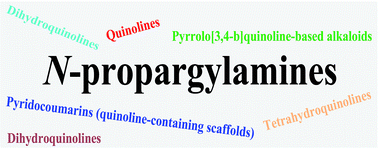Novel routes to quinoline derivatives from N-propargylamines
Abstract
This review article is an attempt to survey literature describing synthetic methods in the preparation of quinoline derivatives from N-propargylamines. Mechanistic aspects of the reactions are considered and discussed in detail.


 Please wait while we load your content...
Please wait while we load your content...